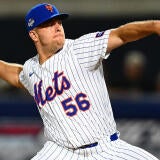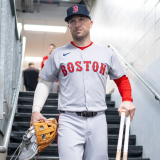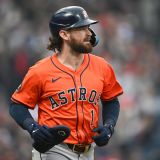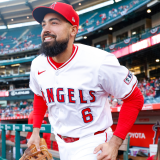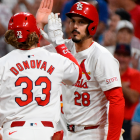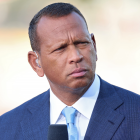Jack Flaherty trade grades: Why Dodgers and Tigers both earn 'A' in deadline move for starting pitcher
The Tigers sent Flaherty to Los Angeles for a pair of prospects
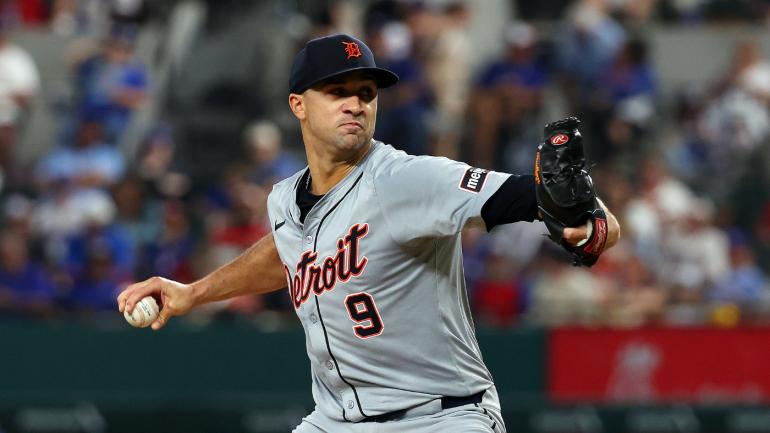
The Los Angeles Dodgers and Detroit Tigers beat the buzzer ahead of Major League Baseball's trade deadline on Tuesday, agreeing to a late swap that sent right-hander Jack Flaherty out west in exchange for minor-league catcher Thayron Liranzo and infielder Trey Sweeney.
As is tradition, we here at CBS Sports like to offer instant analysis for the most notable deals. That includes handing out a letter grade to both teams. You can find that information and more below. First, though, here's the trade in its entirety.
- Dodgers receive: RHP Jack Flaherty
- Tigers receive: C/1B Thayron Liranzo and INF Trey Sweeney
Now, onto the good stuff.
Dodgers grade: A
The Dodgers rotation has been tempest-tossed all season long. The recent returns of Tyler Glasnow and Clayton Kershaw shouldn't obscure how they remain without Yoshinobu Yamamoto, as well four others who could capably round out a starting five (Walker Buehler, Tony Gonsolin, Dustin May, and Emmet Sheehan). Factor in how the Dodgers jettisoned James Paxton earlier this week, and it was clear that they were going to take a real swing at landing an impact arm at the deadline -- that, or dare to enter the stretch run wholly reliant on an assortment of young arms.
The Dodgers couldn't land Garrett Crochet or Tarik Skubal -- no one could, as it turns out -- but they did land one of the better performing starters to change hands.
Flaherty, 28, enjoyed a resurgence in Detroit. It's safe to describe him as being in the midst of what may go down as the second-best season of his career. In 18 starts to date, he's amassed a 2.95 ERA (144 ERA+) and a 7.00 strikeout-to-walk ratio. His strikeout rate is up to a career-high 32%, his walk rate is down to a career-low 4.6%, and so on and so forth. Not bad for someone who, after being traded last deadline, pitched so poorly that he was being used as a low-leverage reliever by the time the postseason arrived.
Generally, these kinds of stories are accompanied with a noticeable change. Maybe the introduction of a new pitch or arm slot, or a big-time alteration in usage rates. Something flashy that you can point to that makes the breakout feel tangible. Flaherty doesn't really have that single major tweak, but he has a few that may have added up to one in the aggregate. He's throwing a little harder (about 0.4 mph on average); he's throwing a career-high 31% sliders (a pitch he altered the movement profile of a few seasons ago); and he's in possession of better command and control. To wit, more than 85% of his pitches this season have been located within 18 inches of the middle of the strike zone; that would represent a career high, and would explain his walk rate.
Clearly that combination of alterations is working for Flaherty, who joins the Dodgers on one heck of a heater: since May 30, he's compiled a 1.77 ERA and a 5.20 strikeout-to-walk ratio over his last eight starts, all while averaging nearly six innings per pop. He's yielded more than two earned runs in just one of those outings. Flaherty isn't going to keep up that level of pitching, mind you, but it seems wholly reasonable to think that he's going to be overqualified to be a Game 3 or Game 4 starter this fall.
The Dodgers did give up one of the most interesting prospects in their system, Liranzo, to get this deal done. One source suggested he might've been the single best prospect dealt this week. These Dodgers, though, are particularly well-positioned to afford the cost of parting with an intriguing young backstop: they have Will Smith locked down for a decade and two other notable catching prospects in the system in Dalton Rushing and Diego Cartaya. Besides, this is a franchise that's hunting World Series titles.
Andrew Friedman, the Dodgers' top baseball executive, may as well have been talking about this kind of trade a few years ago when he said the following: "If you expect to win a deal from a value standpoint in July, you're not going to make deals. We made plenty of offers that were definitely underwater from a value standpoint but felt good about making because of the team that we have."
There's a lot of ball left to be played and a lot of ways things can go wrong, especially for an injury-ravaged club like the Dodgers. Los Angeles does, nevertheless, appear better positioned to compete for its second World Series title under Friedman's watch than it did entering the deadline season. Next comes the fun part.
Tigers receive: A
Scott Harris made a major mistake at last summer's deadline, failing to account for left-hander Eduardo Rodriguez's no-trade clause (which, coincidentally, spiked a deal with the Dodgers) and then compounding that error by not having a fallback deal in place. Harris atoned for that blemish this go around.
Liranzo, 21, is a switch-hitting backstop with big-time strength. In 74 games at High-A this season, he's batted .220/.344/.356 with seven home runs and a walk rate nearing 16% while splitting his time between catcher and first base. Those marks may not appear impressive at first blush, but bear in mind: he's two years younger than his average competition and his OPS was 13 points better than the league-average mark.
As we noted above, some in the industry regard Liranzo as the top prospect moved this week. Others aren't as bullish, citing the possibility that he moves off catcher and graduates with a below-average hit tool (thanks in part to platoon issues against righties). Should that come to pass -- and mind you, he's reliably struck out around 25% of the time -- Liranzo's bat won't stand out the same way at DH or first base. Sometimes the reward is worth the risk. We think that's the case here.
Sweeney, 24, was the 20th pick in the 2021 draft. He's now on his third organization, having previously been shipped from the Yankees to the Dodgers in a trade over the winter. In 96 Triple-A games this season, he's batted .255/.334/.427 with 13 home runs and 16 stolen bases. Sweeney, a lefty batter, makes hard line-drive contact often against righties. He's more prone to expanding the zone and whiffing against lefties, and his results without the platoon advantage are such that he might find himself sitting versus tougher southpaws. Sweeney has never been known for his glovework, either. Given his age and skill set, it's fair to expect him to see big-league action at some point this year.
There's some risk with both Liranzo and Sweeney that may compromise their actual value. But we think the Tigers did well enough to grant them the highest grade.


